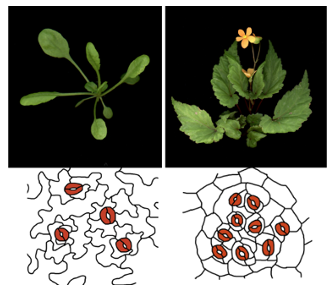DATE2023.08.09 #Press Releases
What explains the diverse breathing pores in plants?
The answer could help artificially modify crops suitable for a changing climate.
Aug 09, 2023
Stomata are pores on the leaf surface helping the plant exchange gases and water. They are almost like little mouth openings on the leaves, with cells that look like lips. All the component cells of stomata are formed from dividing stomatal stem cells. So, the stomata come in all shapes and sizes. But what explains the stomatal diversity has been a mystery.
Researchers from the University of Tokyo, Yuki Doll, Hiroyuki Koga, and Hirokazu Tsukaya, now reveal the mechanism that explains the diversity of stomata in different plant species. The stomata in different species differ in the number of stomatal stem cell divisions. So, based on their previous experimental observations, the researchers had speculated that the timing of gene expression involved in stomatal stem cell division might explain the diversity.
Now they reveal that it is indeed true. The structure of the stomata depends on when genes, such as MUTE and SPEECHLESS, are expressed in the leaves. SPEECHLESS promotes the division of stomatal stem cells, while MUTE stops the division.
Using a genetically modified plant model called Arabidopsis thaliana, they found that artificially shifting the timing of expression of genes affects the stomatal formation. The finding could allow artificial modification of stomatal structure and thus have applications for agriculture in a changing climate. The research team is now working toward testing their findings in natural plant species.

Figure 1. Stomata of two different plant species (Left: genetically modified model plant).
Figure 2. Various stomatal patterns in plants. According to this research, the gene expression timing of stomatal development genes explains this diversity.
For more details, please read the article:
Yuki Doll, Hiroyuki Koga, Hirokazu Tsukaya. 2023. Experimental validation of the mechanism of stomatal development diversification. Journal of Experimental Botany. DOI: 10.1093/ jxb/erad279


